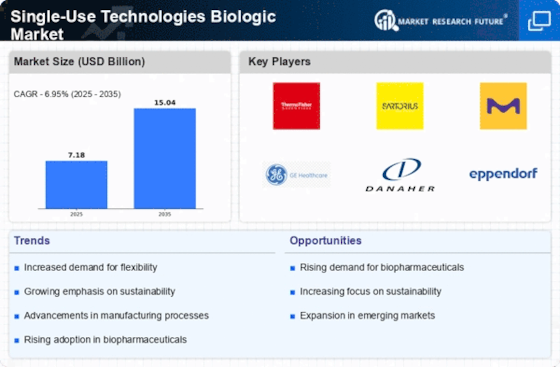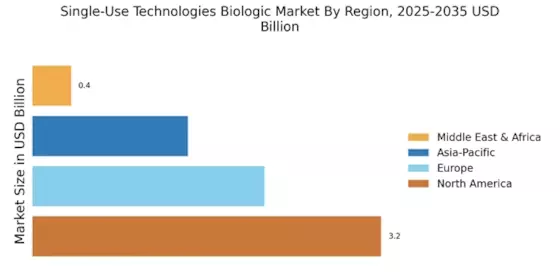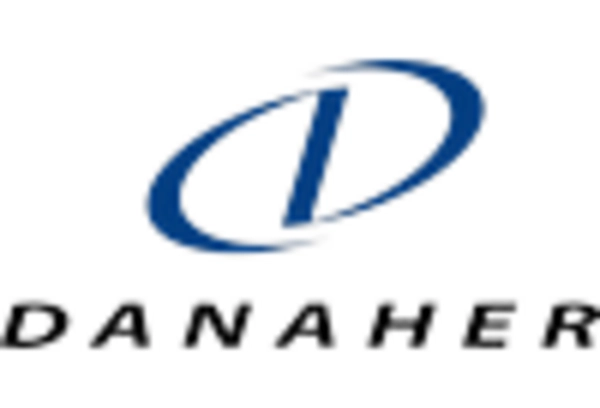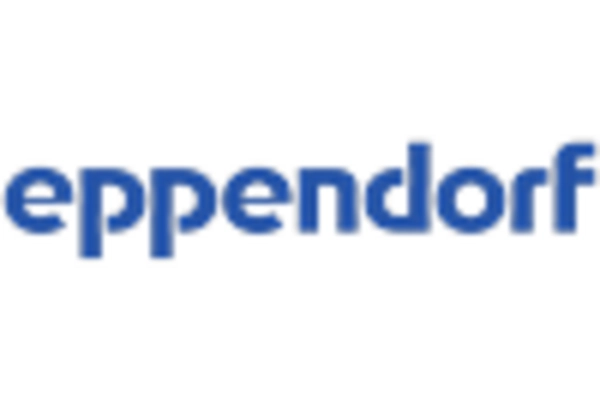Rising Demand for Biologics
The Single-Use Technologies Biologic Market is experiencing a notable surge in demand for biologics, driven by the increasing prevalence of chronic diseases and the aging population. Biologics, which include therapeutic proteins and monoclonal antibodies, are becoming essential in treating various conditions. According to recent data, the biologics market is projected to reach approximately USD 500 billion by 2026, indicating a robust growth trajectory. This rising demand necessitates efficient production methods, where single-use technologies play a pivotal role. These technologies facilitate faster turnaround times and reduce the risk of cross-contamination, thereby enhancing the overall efficiency of biologics manufacturing. As the industry continues to evolve, the integration of single-use systems is likely to become a standard practice, further propelling the growth of the Single-Use Technologies Biologic Market.
Cost Efficiency and Operational Flexibility
Cost efficiency remains a critical driver within the Single-Use Technologies Biologic Market. The implementation of single-use systems significantly reduces capital expenditures associated with traditional stainless-steel bioreactors. By minimizing the need for extensive cleaning and validation processes, companies can redirect resources towards innovation and product development. Furthermore, single-use technologies offer operational flexibility, allowing manufacturers to quickly adapt to changing market demands. This adaptability is particularly advantageous in the biologics sector, where product pipelines can shift rapidly. Recent analyses suggest that companies utilizing single-use technologies can achieve up to a 30% reduction in operational costs, thereby enhancing their competitive edge. As the market landscape continues to evolve, the emphasis on cost-effective solutions is likely to drive further adoption of single-use systems in the biologics manufacturing process.
Regulatory Compliance and Quality Assurance
Regulatory compliance is a fundamental driver in the Single-Use Technologies Biologic Market. The biologics sector is subject to stringent regulations to ensure product safety and efficacy. Single-use technologies facilitate compliance by simplifying validation processes and reducing the risk of contamination. Regulatory bodies are increasingly recognizing the advantages of single-use systems, which can enhance the quality assurance of biologics manufacturing. Recent guidelines have encouraged the adoption of single-use technologies, as they align with best practices for maintaining sterility and product integrity. As regulatory frameworks continue to evolve, companies that leverage single-use systems are likely to find themselves at a competitive advantage. This emphasis on compliance and quality assurance is expected to drive further investment in single-use technologies, reinforcing their role in the Single-Use Technologies Biologic Market.
Focus on Sustainability and Environmental Impact
Sustainability is becoming an increasingly important consideration within the Single-Use Technologies Biologic Market. As environmental concerns grow, manufacturers are seeking ways to minimize their ecological footprint. Single-use technologies, while often criticized for generating waste, are evolving to incorporate more sustainable materials and practices. Companies are exploring biodegradable options and recycling programs to address these challenges. Furthermore, the efficiency of single-use systems can lead to reduced energy consumption and lower water usage during production processes. This focus on sustainability not only aligns with regulatory expectations but also resonates with consumers and stakeholders who prioritize environmentally responsible practices. As the industry moves towards more sustainable solutions, the adoption of eco-friendly single-use technologies is likely to gain momentum, shaping the future of the Single-Use Technologies Biologic Market.
Technological Advancements in Single-Use Systems
Technological advancements are significantly influencing the Single-Use Technologies Biologic Market. Innovations in materials and design are enhancing the performance and reliability of single-use systems. For instance, the development of advanced bioprocessing bags and connectors has improved the integrity and sterility of biologics production. Additionally, automation and digitalization are being integrated into single-use technologies, streamlining operations and reducing human error. These advancements not only improve efficiency but also ensure compliance with stringent regulatory standards. As the industry embraces these technological innovations, the market for single-use systems is expected to expand, with projections indicating a compound annual growth rate of over 15% in the coming years. This trend underscores the importance of continuous innovation in maintaining competitiveness within the Single-Use Technologies Biologic Market.


















Leave a Comment